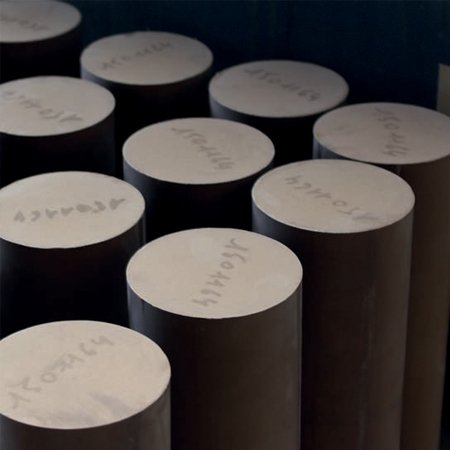Tubes
Tubes are available in different materials and can be shaped and cut according to your needs. Vanéflon can execute various production techniques to meet your requirements: vertical compression molding and extrusion molding. Vanéflon guarantees tolerances up to 0,1 mm. Its big stock makes for fast delivery times. If you have specific requirements, tailormade production is possible.
Vertical compression molding
Vanéflon has more than forty years of experience in the fabrication of vertically compression molded semi-finished products. The in-house production process allows Vanéflon to manufacture tubes with outstanding uniformity. Materials without cracks, air entrapments and bubbles are thus obtained.
The vertical compression molding process allows for low-stress parts with excellent dimensional, chemical and mechanical characteristics. Compression molding has the ability to mold large and fairly intricate parts. It is also one of the lowest cost molding methods. Moreover it wastes relatively little material, giving it an advantage when working with expensive compounds.
Key properties:
- Diameter: max. 1.250 mm
- Length: max. 300 mm
- Excellent dimensional, chemical and mechanical characteristics
- Little waste
- Consistent high quality
- Continuous quality process control
Extrusion
In extrusion molding granulates will be melted into a liquid. This liquid will then be forced through a die, forming a long tube like shape. The extrusion is then cooled and forms a solid shape which can undergo different operations (cutting, coiling …). Extrusion molding is a continuous technique
Extrusion molding provides considerable flexibility in manufacturing products with a consistent cross-section. It also has a relatively low cost compared to other molding processes. Leftover materials can be reused. Extrusion molding has the incredible advantages that there are no constraints in length.
Key properties:
- Diameter: max. 160 mm
- Length: max. 2.000 or 3.000 mm
- PTFE and PTFE compounds and high performance and engineering plastics (PEEK, Vespel®, PA, POM, PET …)


